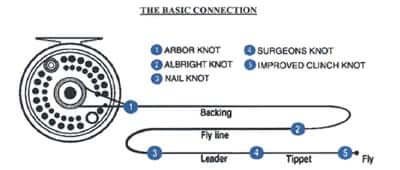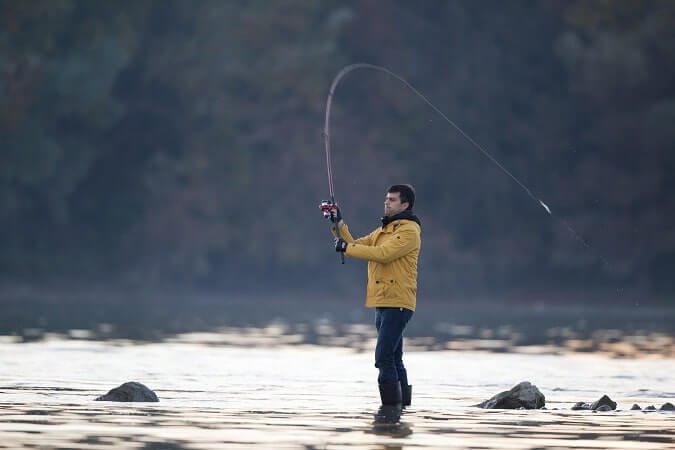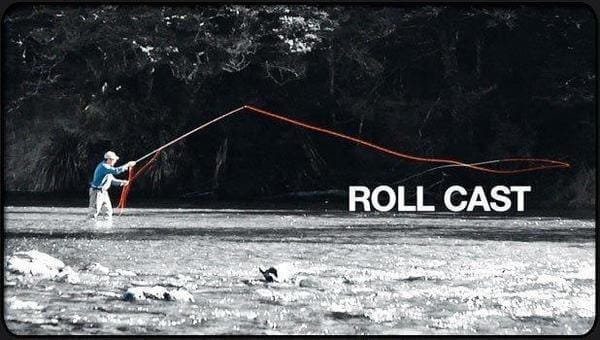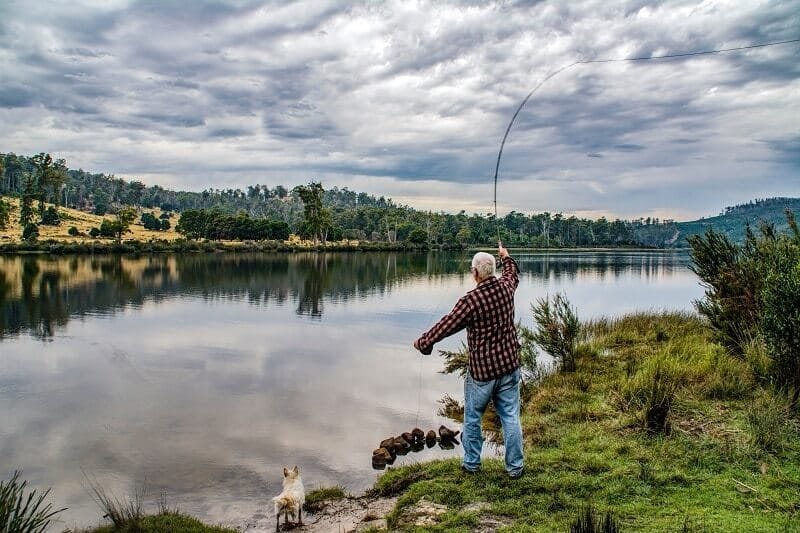You might have just started getting information about fly fishing and now you might want to know how to cast when fly fishing in a proper manner. Fly fishing is all about casting fly line. Generally, the other fishing casting methods focus on the lure’s weight to pull off the line from the reel while performing the forward cast. Casting during fly fishing is totally different from the traditional casting methods and we are gonna discuss that shortly. Fly fishing is also one of the most creative fishing techniques because of its unique casting methods. You need to know some basic information regarding fly fishing before we present you the technique to cast when fly fishing.
Some of The Top Fly Fishing Rods For You
Table could not be displayed.
What is Fly Fishing?
Fly fishing is a sport which is full of adventures. It is a unique method of fishing, where you use artificial flies to lure fish. You can create your own artificial flies or get dry flies, nymphs or streamers to act as something that resembles food for fish in the water. You can perform fly fishing with some basic equipments such as the fly rod, fly reel, fly fishing line and these artificial flies. If you are thinking about starting a fly fishing journey, it is not just about catching fish, but also about an entertaining method of interacting with nature closely.
Before getting started with fly fishing…
you need to know about the basic equipments which are mentioned above. You also need to know the way to use different fly fishing knots like arbor knot, albright knot, surgeon’s knot, etc. to connect the different components of these equipments. During the fly fishing process, the artificial fly is cast above or on the surface of the water with the help of the above mentioned basic equipments. However, you have to know about certain techniques to cast fly when fly fishing. It is really easy to understand the basics of different casting techniques. You can perform different types of casting efficiently, provided that you are ready to not worry about catching any fish at the beginning of your fly fishing journey.
Different Ways of Casting
When you have known the basics of fly fishing and the steps involved in setting up the equipments, you are ready to find out the fundamentals involved in different casting techniques when fly fishing.
Generally, there are two different types of casting which are listed below:
- Overhead Casting
- Back Cast
- Forward Cast
- Roll Cast
We will be discussing both of these casting techniques in this guide. But now, it is time to get the information about the basics of casting when fly fishing.
How To Cast When Fly Fishing-The Casting Basics
During the casting process, the artificial fly is placed at the end of a thin fly fishing line, which is connected around the fly reel. The weight of the artificial fly pulls off the line from the fly reel while working together with the forward momentum produced during the cast. As we mentioned above about the uniqueness of fly fishing from other types of fishing, fly fishing uses nearly weightless flies which just act as food organisms to provoke the fish to strike on them.

You might be wondering about how you can lure the fish when the distance covered is very less while using such weightless item. When you are comparing your fly fishing line with traditional fishing lines, you will find a lot of differences. The fly fishing line is designed with a thick substance like PVC or coated with urethane to increase the heaviness of the load. While casting, the produced energy passes through the fly line and hence the fly line casts the fly to a large distance.
Loops while Casting
While casting, the fly fishing line follows the path of the end of the fly rod. Once the casting stroke is stopped, the produced energy is passed through the fly line. It keeps on unrolling across the same direction where the end of the fly rod was traveling. During this phenomenon, a loop is created.

Here are certain things you need to know about to make sure you are following the casting procedure in a proper way.
- The end of the loop needs to unroll constantly to the bottom. The cast also needs to unroll constantly to the ground.
- The fly line shouldn’t collapse while unrolling smoothly during the casting procedure.
- The fly line needs to cross itself and twist during the casting procedure.
- The fly line needs to unroll parallel to the fly.
- The loop shouldn’t be wide. It just needs to have just around a meter distance between the top and the bottom.
Loading the Fly Rod with Energy

During the casting process, the fly rod needs to be loaded with energy to travel the fly to a larger distance. Here the loaded energy in the fly rod needs to be in a constantly accelerating motion in the casting stroke.
A perfect cast can be obtained if the loaded energy in the fly rod travels down to the fly line during the casting process. To create a perfect cast, the casting stroke needs to be in a constantly accelerating motion along with an abrupt stop at the end which enables the fly rod to get back to constantly accelerating position and hence results in the transfer of energy from the rod to the line. Finally, the energy needs to be transferred to the end of the line to produce a good cast.
Overhead Cast

Overhead cast involves two different steps, which are considered as two different casts; the Back cast, and the Forward cast. What exactly happens in the overhead cast is that the fly fishing line is brought over your head and behind you to load energy in the fly rod which is recognized as Back cast and later cast forward to transfer energy into the fly line as Forward cast.
To perform an Overhead cast, you need to perform fly fishing in a large open space because the fly line needs to be brought behind you.
Roll Cast

Roll cast is totally different from Overhead cast and you don’t even have to bring the fly line behind you. This is why you don’t need to worry about being a place with large open area.
What exactly happens in this cast is that the fly line is brought backwards in a slow motion and later suspended freely at the end of the fly rod which generates sufficient amount of energy into the fly rod for performing the cast. This type of cast is a cost-effective alternative to the Overhead cast, however it needs a lot of practice and effort.
Precautions When Fly Fishing
Fly fishing isn’t so dangerous sport. However, it needs a lot of practice and you have to follow a lot of safety precautions to protect yourself. Since it is performed just near the water surface, it could be dangerous if you don’t take the precautions for your own safety.
Here are some precautions you need to take when fly fishing:
- You need to take basic first aid kit, water bottle and throw jug along with you.
- You shouldn’t place the fly rods on the ground since they can be destroyed when stepped on.
- You shouldn’t use real flies. Instead, you need to use artificial flies which weigh very less.
- You shouldn’t put your wrist in motion most of the time. Doing so might prevent loops from loading energy into the rod.
Wrapping Up!
With the completion of this guide to how to cast when fly fishing, we believe you are now competent about the information regarding the better way to cast flies and the two different types of casts. If you aren’t able to cast properly in your first try, you shouldn’t be sad about it. Casting in a proper way requires a lot of practice and you have to put tons of effort into it. Just like everything else, you need to focus on your safety as well because safety is your main priority while implementing new forms of casting procedures when you are fly fishing.
Last update on 2024-03-31 / Affiliate links / Images from Amazon Product Advertising API
